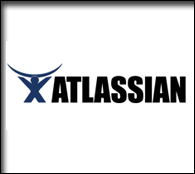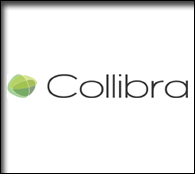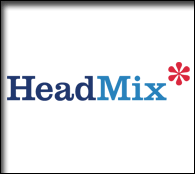Steel Horses, Thorny Roses and Long, Winding Roads
by Eric Norlin on Sep.14, 2010, under Uncategorized
As anyone who knows me knows, I have a borderline obsession with 1980’s hair metal and heavy metal. It was the music of my teenage years: I grew up listening to everyone from Iron Maiden to Bon Jovi, and I watched in absolute horror as my beloved form of music mutated into some kind of over-the-top, me-too, big hair monstrosity on MTV. It got so bad there at the end that what was on MTV actually looked like self-parody, Spinal Tap style (or, in modern parlance, Steel Panther style — warning: way NSFW).
The other day I was thinking about the analogy between what happened to metal in the 80s and the mainstream adoption of enterprise software (yes, I did just write that sentence). Specifically, how in both cases, some bands/software get mainstream adoption and go on to a career of maturity (Bon Jovi), while in other cases, some bands/software get mainstream adoption and go on to become absolutely ridiculous (uh - I dunno - Poison? Winger? Dozens of other metal MTV bands with power ballads from the late 80s). And that made me wonder why…
If you’ll remember, Bon Jovi was big in the 80’s. I mean REALLY big. “On my steel horse I ride” has been forever ingrained in the American psyche, and still rings out loud in clear in Karaoke clubs and cars on the interstate across the fruited plain. On the other hand, a lot of other bands were really big on MTV at the same time. What was the difference? Substance (I’m not sure you can argue “substance” while listening to the “Slippery When Wet” album)? Growth? Luck? A combination of factors?
Similarly, take a look back at enterprise software in the late 90’s. Some of it actually delivered on it’s promises (the lighter weight component of ERP systems, accounting systems, etc), but an awful lot of it resembled the MTV hair metal crap of the late 80’s — overblown self-parody (B2B software exchanges, anyone?).
When we place these two incongruous examples side-by-side, what can we learn (other than that striped, neon spandex and big hair is not a good look)?
1. “Mainstream Adoption” does not mean long-term success: Mainstream adoption can be just as fleeting, just as much a case of crash and burn as short term innovation. Mainstream adoption can make managers and record labels a crapload of money in the short-term, but that really doesn’t mean that your music (software) is gonna be much more than a joke in the long-term. “Mainstream Adoption” is just as often a fad driven by hormonal teenagers (what’s THAT analogy in the enterprise?), as it is a sign of some chasm crossing moment of success. Don’t be fooled, “mainstream adoption” of any enterprise software (e2.0 or otherwise) does not mean long-term success or even long-term meaning for the enterprise.
2. When every album requires a power ballad, things are not good: Remember that? From Autograph to White Lion (or Whitesnake), once Motley Crue took “Home Sweet Home” to number 1, it was just REQUIRED that every metal album have a power ballad that sounded like - you guessed it — Home Sweet Home. Do we see that in enterprise software today? Oh yea. Does any e2.0 suite/platform/solution NOT have some sort of micro-blogging/activity stream function? I give you the e2.0 power ballad. (Note: I’m not picking on activity streams, as I actually think they’re key piece of value.)
3. When those on the edge start getting mimicked by big money - watch out: You know there was a day when metal was just cool. Nobody listened to it. We all had long hair and hung out with the wrong crowd. Albums like Def Lepard’s “High and Dry” or Metallica’s “Kill em all” were actual musical displays of talent. And then some tipping point happened, and the record companies decided they could make some money doing something *just* a bit more “mainstream” — so they threw money at it. Next thing you know: Winger. What do we see today in enterprise software? Let’s just say a lot of big guys suddenly think that collaboration is a hot new space they can sell into, so they’re building stuff.
Okay, you get the negative side….but what about the positive analogies? I mean, metal music from the 80’s did influence and change a lot of things, right?
At least one HUGE mainstream adoption story will grow with the market enough to have a long term career. Love ‘em or hate ‘em, you cannot deny that Bon Jovi’s had one, long, successful career. They did it by moving past the adolescence of “bad medicine” and into some of the more adult (almost country-tinged) topics of “Lost Highway.” The key takeaway here is that Bon Jovi is not still the Bon Jovi of old. They didn’t “stay faithful” to some vision of changing the whole enterprise — they engaged, added value, changed with the times, brought their own voice to the party, and became part of the system. They — wait for it — “sold out” — which is precisely what enterprise software has to do to survive long-term.
Bottom-line: there are *good* kinds of mainstream adoption and *bad* kinds of mainstream adoption, and it’s high-time that we all stop thinking that any mainstream adoption is some sign of goodness and progress, as it’s just as often a sign of an overblown, self-parody that has too much cash being pumped into it. When every album requires a power ballad, and every video has slo-mo footage of hairspray teased hair being blown back by a fan, we’re in trouble, it’s a bubble - RUN the other way. And that may just be where we’re headed with so much of the enterprise 2.0 software of today.
Not that folks won’t make a lot of money in the meantime. They will. But let’s not fool ourselves into thinking that all mainstream adoption in enterprise software is much more than a bad 80’s MTV metal video. Because 8 times out of 10, that’s exactly what it is.
…On my steel horse I ride…









